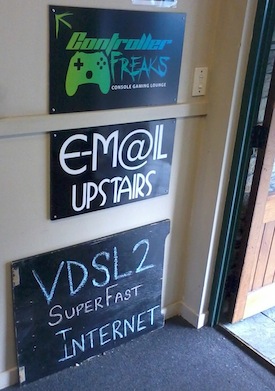
Building up from VDSL.
There’s an ongoing debate over whether fiber to the home technology is necessary, given recent progress in boosting speeds over copper wires. In particular, advanced DSL technologies – VDSL2 vectoring and pair bonding – has developed to the point where routine 50 Mbps service is possible for many telco-served homes, and commercially feasible speeds of 100 Mbps or better are on the horizon. I’m not counting market stunts as general examples.
Some analysts are blurring the distinction, lumping pure FTTH in with fiber to the node (FTTN) or fiber to the last amplified (FTTLA). There’s a fair question involved: how far back into the network can you go on copper and still call it fiber service?
Looked at one way, FTTH – where the glass run right to the side of a house – usually depends on copper to distribute bandwidth to devices and users inside. Fiber-based local area network technology will come to the consumer segment, but so far conventional ethernet is not where consumers are seeing the bottleneck.
Although there are hints that legacy copper networks might one day deliver gigabit speeds, that’s not a commercial reality now. Fiber can do it, but the demand for ultra-fast residential service represents a small fraction of the market.
I agree with those who are saying that VDSL or whatever comes after it are stop gap measures that can satisfy current demand (leaving aside the broadband equivalent of Lamborghini owners) and greatly reduce the pressure to invest large amounts of capital into fiber services that could take decades to generate an acceptable return on investment. But in the long run, it’ll only replace fiber if the demand for bandwidth in a typical home levels off. So far, overall residential bandwidth consumption has been rising steadily. If it ever hits a plateau that’s within reach of advanced copper technology, that’s when it’s time to re-open the VDSL versus fiber debate.
